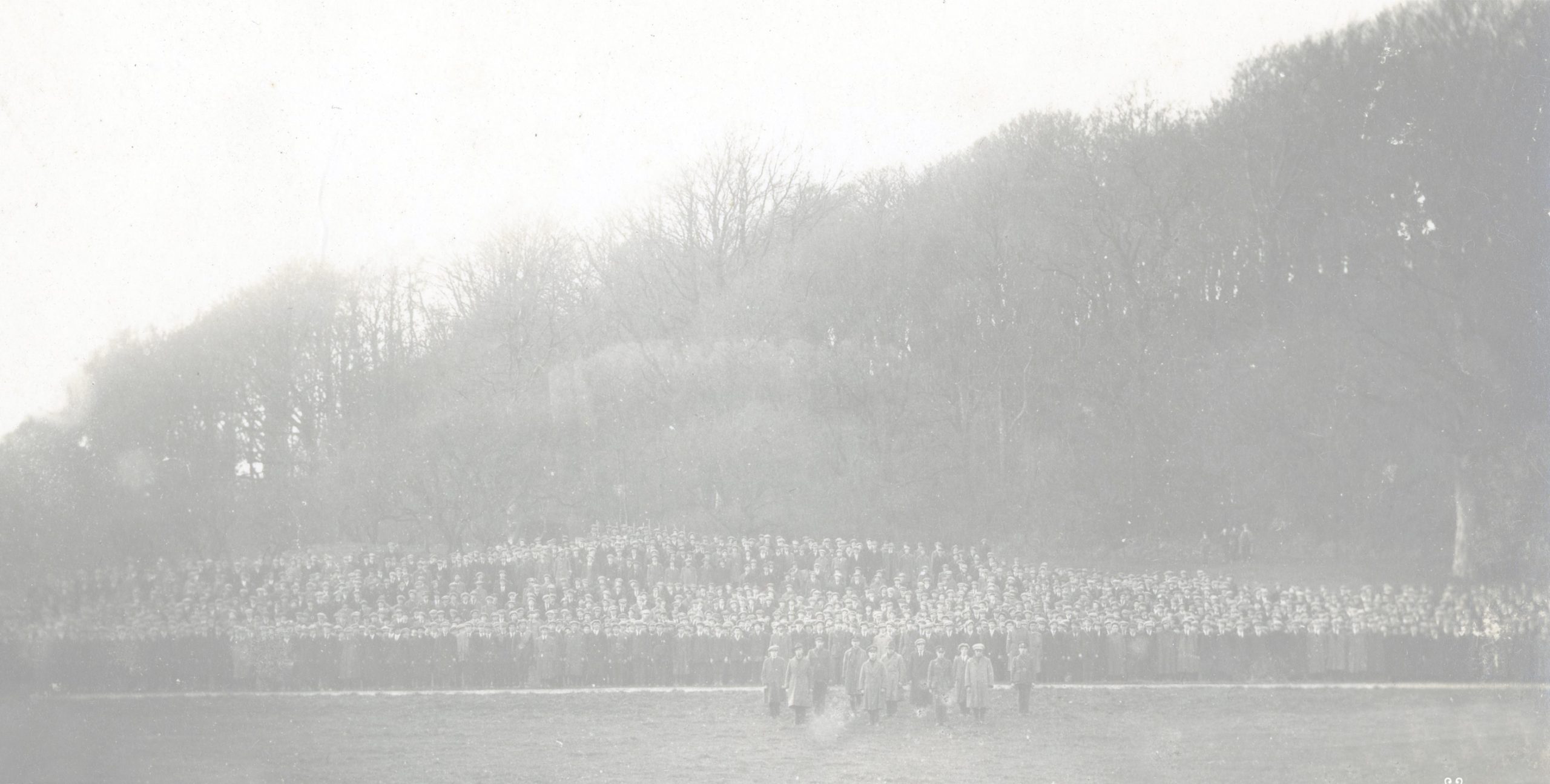The Hughes Family, Gallows Hill, Castlebar.
Lawrence, Michael, Tomás and Nellie lived with their parents Edward and Annie, and grandfather Lawrence Gallagher whose late wife was Eleanor Garvey. They were reared on the philosophy of the Irish patriots down the centuries, their grandfather Lawrence relating stories from the great famine, the Castlebar workhouse was across the fields from their home, the 1798 rebellion, staball and the races of Castlebar a few streets away.
The Hughes siblings were among the early members of the Castlebar Nationalist movement a movement which was spreading across the country. Michael and Tomás had joined the Irish National Volunteers, took part in a drill display by volunteers drawn from all over the county, at which Jack Chambers took part with the rest of his company, this was held in July 1914. Michael Hughes was a member of the West Mayo Brigade A.S.U. and Tomás volunteer A Coy No1 1st Battalion Castlebar I.R.A. and their sister Nell was a founding member having called a meeting in 1915 that marked the foundation of the Castlebar branch of Cumann na mBan na h-Éireann (The Irish woman’s Council) the women’s section of the Irish Volunteers.
The year is 1969 Michael and Catherine (Kate) Hughes and family move home from “Padua” Corcoran Tce., Killala road, Ballina to live in Rathnaconeen, on the Foxford road. The local neighbours called in to welcome us, among them Jack Ruttledge, he told Michael that he was a cousin of P.J. Ruttledge of Ardagh Ballina, of the North Mayo Brigade Flying Column I.R.A. Jack was a member of the Rehins Battalion I.R.A. 1920-1924. Jack said that General Michael Kilroy Newport, sent word to the Rehins Battalion to go to Lahardane and Crossmolina areas to help them with the survivors from the Kilmeena Ambush, their wounds had been treated by Nurse Carey. Jack remembered vividly that night with Captain Michael Foody, Rehins Battalion rowing the boat taking the men across the lake in the Crossmolina area, on the move again to a safe house. A few days afterwards the Tans found the boat and destroyed it. Names were not mentioned, both of them may have passed by on the streets in Ballina totally unaware of this event. What a coincidence, after all those years ago to be now close neighbours.
Michael Hughes died 30th September 1976, during the next few weeks we received a letter from Francie Chambers of New Jersey, U.S.A. and formerly Thomas Street Castlebar, a former comrade in arms. He described the horrible conditions of the camp while they were imprisoned in Tintown 1, the Curragh, in County Kildare during 1923. He expressed his gratitude for Michael’s (Dad’s) continuous encouragement. Michael drew up a plan of action, they all agreed with him, Mac Hale, Swift, Carney, Francie and “the Bull”. They began the work of digging a tunnel. They were discovered and severely punished for their efforts. Their attempted escape plan having failed, they went on hunger strike, to force the guards into a more lenient position regarding the prison rules and regulations. Into the third week of the fast it was finally called off and a compromise arranged between them and the prison authorities. On 24th May 1923 the Irish Civil War ended when Frank Aiken in conjunction with Eamon de Valera called off the fighting by the Anti- Treaty I.R.A. Michael Hughes was a silent man, we weren’t aware of the inhuman treatment, inedible food, inadequate bedding and clothing of those prisons, Michael having spent various periods in Athlone Military prison and Mountjoy.
The Hughes home was a marked one, harassed by the R.I.C. and Tans from time to time. Michael accumulated large stocks of Firearms and ammunition by raiding houses at night. He stored the guns under the floorboards of his linotype machine in the Connaught Telegraph, where he was employed. His sibling Laurence told me on one of those raiding occasions, he was at home with his mother Annie; he ran to the bedroom, hid under the mattress, pulled the quilt over and put the greyhound sitting on the bed. They burst into the room, breaking the contents, poking around the mattress, the greyhound never moved and they eventually left. Larry was saved, badly shaken, and went on the run.
After Michael’s release from Tintown the Curragh, he got a job as a linotypist in the “Ballina Hearld” newspaper and later the “Western People”. He was a founding member of the new Republican Political Party Fianna Fáil in 1926, held in the Town Hall, Ballina presided by Eamon de Valera. Michael died on the 30th September 1976 and is buried in Ballinahaglish Cemetery, Knockmore, Ballina.
Nellie Hughes and Cumann na mBan
The women of Mayo were all well aware of the organisation the Ladies Land League established during the land war of the 1880s; some of those were founding members of Inghiridhe na h-Éireann (Daughters of Ireland) founded by Maud Gonne Mac Bride in 1900: branches were founded in Limerick, Cork, Belfast and Ballina Co. Mayo. Female members were joining other organisations – the Labour Movement and the Irish Woman Workers union.
In 1913 a group of Republican minded women met in Wynn’s Hotel in Dublin, with the objective of forming an organisation for women to work with the recently formed Irish Volunteers. A further meeting was called and on 2 April 1914, marked the foundation of Cumann na mBan na h-Éireann (the Women’s Council of Ireland). Numerous branches were formed around the country and pledged themselves to the constitution – corughadh of the organisation. Nellie called a meeting of women from the town and surrounding countryside, a large number attended, with a further meeting marked the foundation of the Castlebar branch of Cumann na mBan. The primary aim of the organisation set up by the constitution was to “advance the cause of Irish Liberty and to organise Irish women in the furtherance of this object to assist in arming and equipping a body of Irish men for the defence of Ireland” and to form a fund for the purposes to be called “The Defence of Ireland Fund.” Cumann na mBan raised money by organising céilithe (ceilies), concert, feiseanna, and other social events, aeríochtaí, and dramas. The women wore a green uniform with a slouch hat, many members made their own uniform of tweed material. The motif of a rifle with the initials of the organisation intertwined was their badge and flag. The Castlebar cumann members were active in organising and attending first aid lectures, and practicals given by Doctor Anthony Mac Bride and by trained nurses from the local hospitals in the town, also attended drill parades and learning the use of fire arms in the Rooney Hall. They were fully trained and awaiting the call in Easter week.
The Castlebar Cumann was commanded by John Hoban Tucker Street, whose daughters Kathleen and Ciss with Annie Chambers, Nellie Hughes, Bridget Morahan, Norah Walsh and officer commanding A.M. Stanton were dedicated members. After the rising the Cumann women were not prepared to let their organisation die. Their President Countess Markievicz set about revitalising the organisation and in 1917 with the conscription crisis the Cumann women were quick to support Sinn Féins campaign of opposition to it, and Nell vigorously opposed it, handing around and posting up literature, breaking up recruiting meeting, interrupting speakers on recruiting platforms. Nellie took part in the public funeral for Thomas Ashe R.I.P. She assisted in organising concerts and dances for funds for prisoners interned and procuring arms from the Munster Fusiliers and helping deserters to get away. Nellie was constantly busy getting information as to the movements of Tans and soldiers. Doing dispatch work, procuring ammunition from military in military barracks Castlebar and helping with wounded.
Nellie discovered a plot among soldiers against men of the column. There was a group of men and soldiers mixed, down at the end of the room, “I just strolled carelessly down and pretended I hurt my foot and began to bandage it. I heard the plot – they were going to have fellows rounded up, instead of bringing ammunition, they would bring out the soldiers and have them arrested. I told my brother Michael and a man named William McCarthy. They saved the situation. In April 1921 my house in Gallows Hill was wrecked by the Tans and (R.I.C. wore masks). I was taken out and ill-treated; when I tried to escape I was fired on several times. All my family were terribly beaten, Tomás was wounded in that attack, we had to leave and go on the run.” She assisted at escape of men from Castlebar Jail, brought clothes, etc. to meet them Vols. Mulkerrins & Blaney Westport & L Moraghan Castlebar.
On the 23 May 1971 and the 6th June 1971, my sisters Rosaleen, Dympna and I accompanied Dad/Michael Hughes to the commemoration ceremonies held at Skirdagh and Kilmeena, and Carrowkennedy. We met the survivors of the west Mayo Brigade Flying Column I.R.A. Brian Corrigan officer in charge of Intelligence and communications told us of Nellie’s heroic deeds, her bravery and the daring risks she took endangering her life.
Nellie died on 31st December 1976, and is buried in the family Gallagher-Hughes grave in the old cemetery, Castlebar.

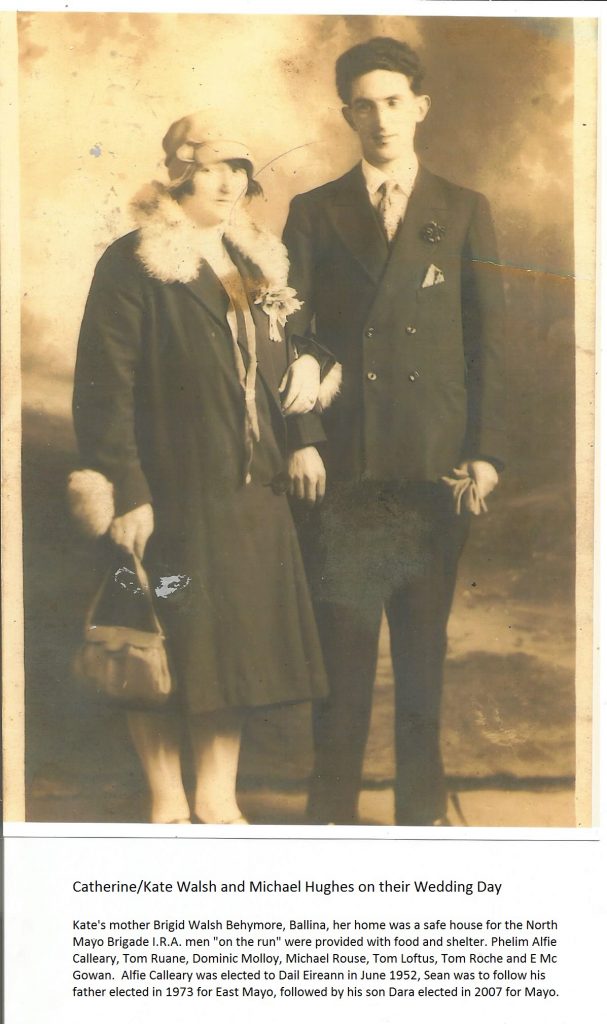
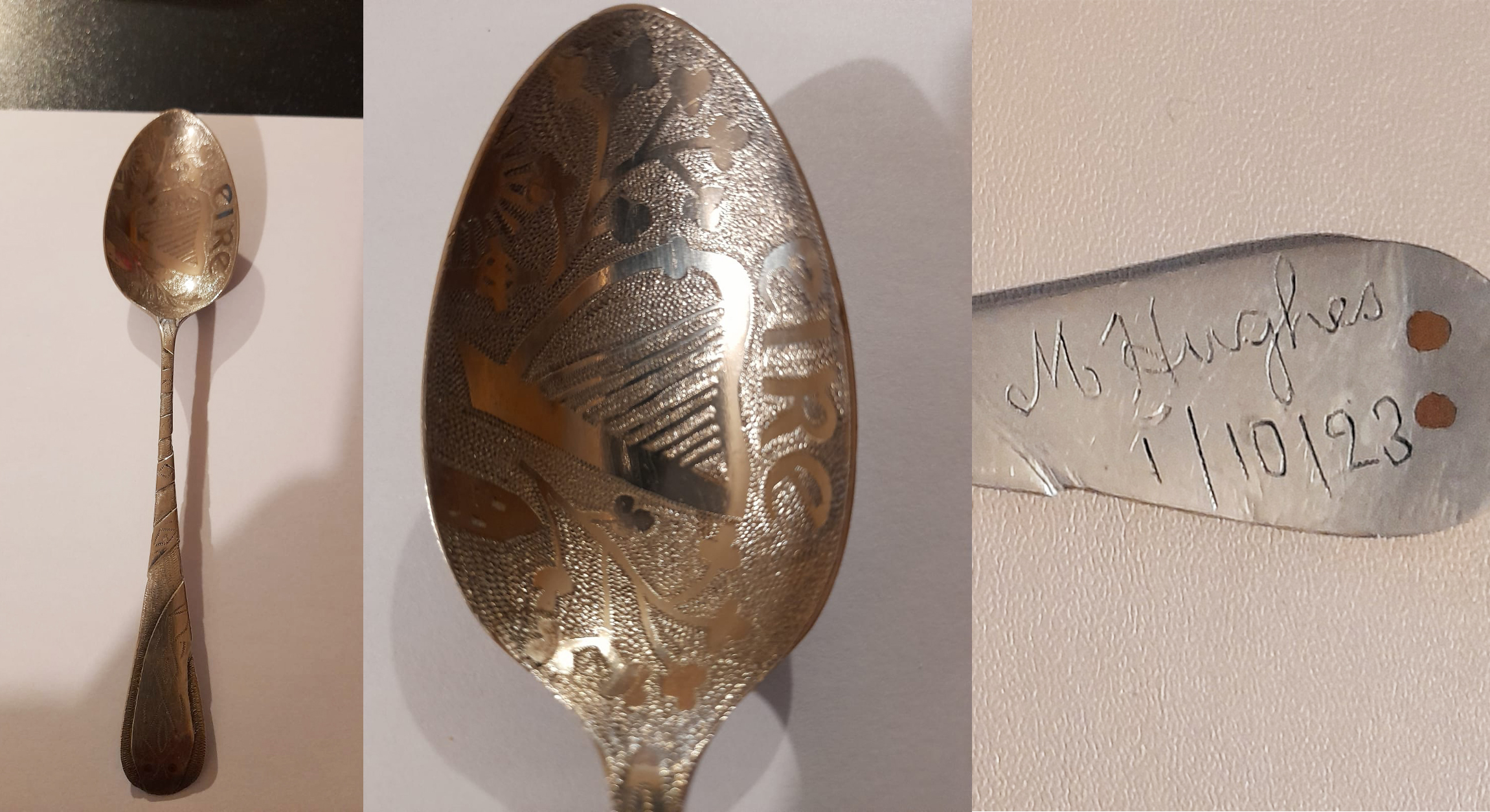
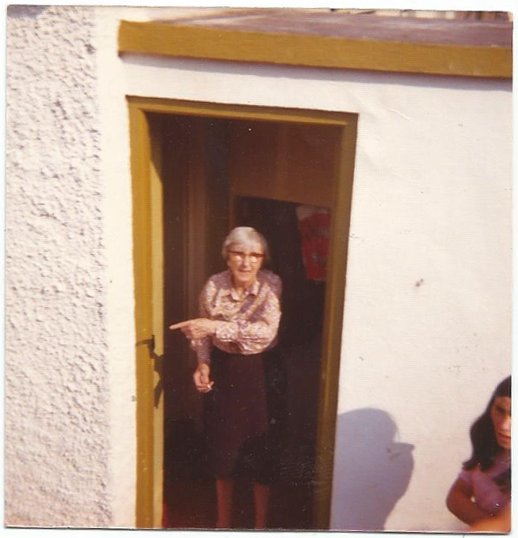

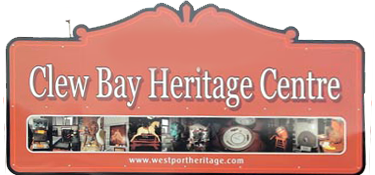 www.westportheritage.com
www.westportheritage.com